Your cart is currently empty!

The Flying Scotsman (1938)
The stock for ‘The Flying Scotsman’ was replaced by the LNER in 1938 with two new pressure ventilated luxury trains.

‘The Flying Scotsman’ is an express passenger train service that operates between Edinburgh and London, via the East Coast Main Line. The service began in 1862 as the ‘Special Scotch Express’ until it was officially adopted in 1924.
In 1860 the North British Railway (NBR), the North Eastern Railway (NER) and the Great Northern Railway (GNR) established the East Coast Joint Stock for through services using common vehicles, and it is from this agreement that the Flying Scotsman came about. The first Special Scotch Express ran in 1862, with simultaneous departures at 10:00hrs from the GNR’s London King’s Cross and the NBR’s Edinburgh Waverley. The original journey took 10½ hours, including a half-hour stop at York for lunch. Increasing competition and improvements in railway technology saw this time reduced to 8½ hours by the time of the Race to the North in 1888.

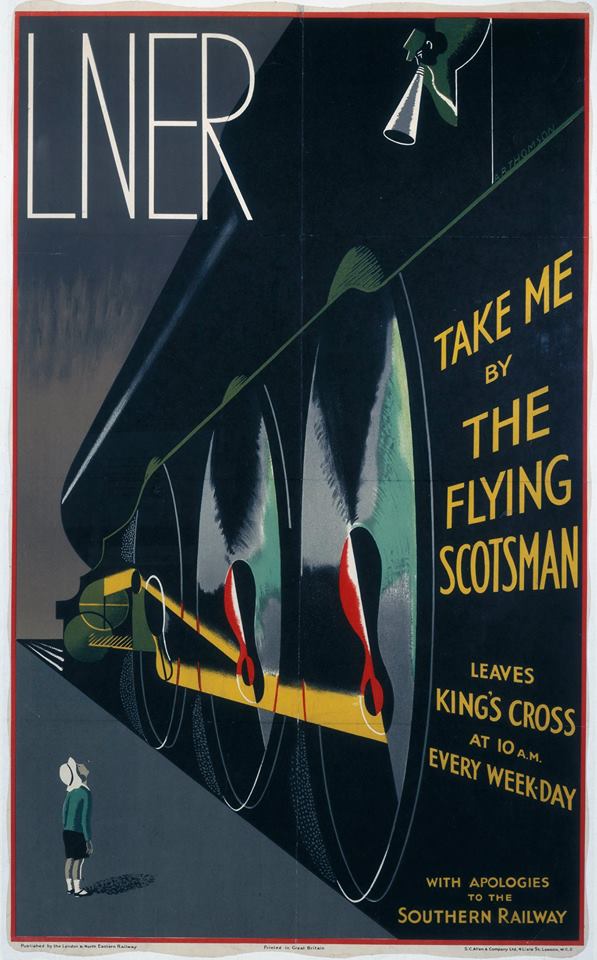
From 1896, the train was modernised, introducing such features as corridors between carriages, heating, and dining cars. As passengers could now take lunch on the train, the York stop was reduced to 15 minutes, but the end-to-end journey time remained 8½ hours. Like the earlier carriages built for the service, this rolling stock was jointly owned by the three operating companies, and formed part of the pool known as the East Coast Joint Stock.
In 1924, the LNER officially renamed the train to ‘The Flying Scotsman, its unofficial name since the 1870s. To further publicise the train, a recently built Gresley class A1 locomotive – at first numbered No. 1472 and, subsequently, No. 4472 – was named after the service and put on display at the 1924 British Empire Exhibition.
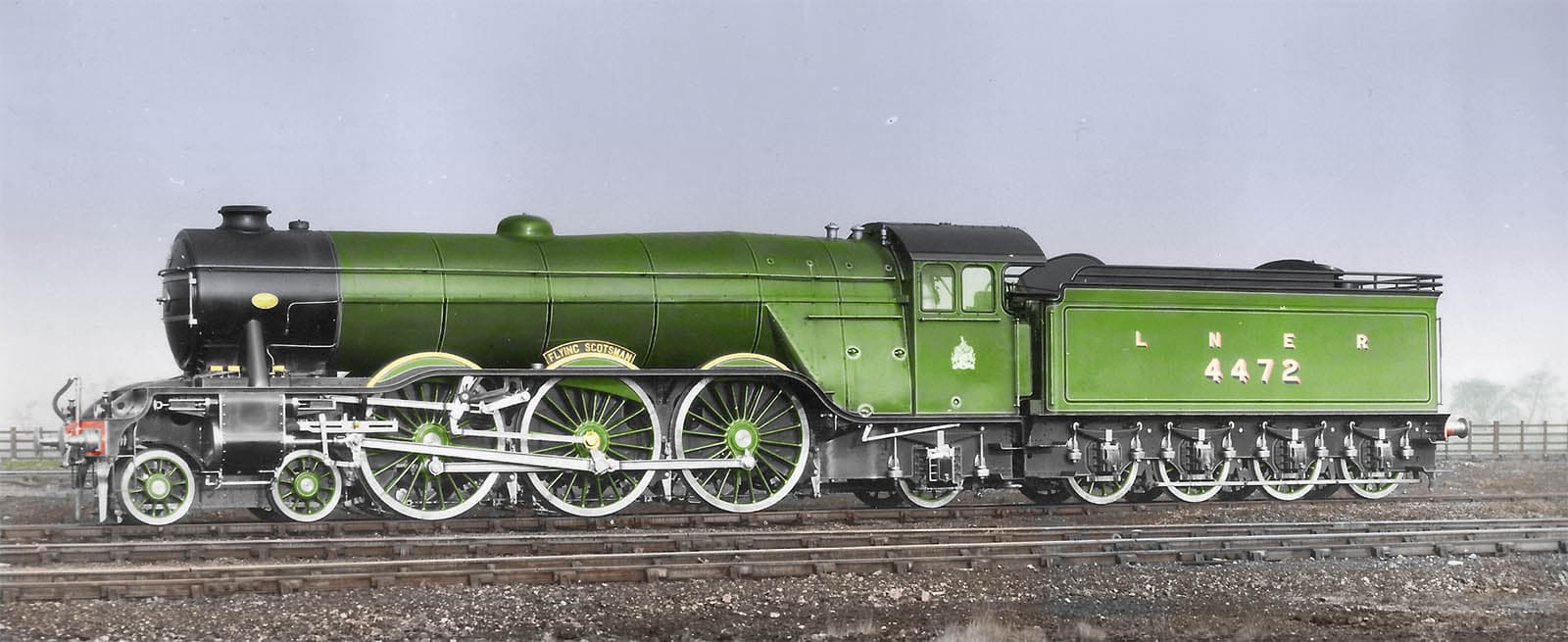

Due to a long-standing agreement between the competing West Coast and East Coast Main Line routes since the famous railway races of 1888 and 1895, speeds of the Scotch expresses were limited, the time for the 392 miles being eight hours 15 minutes. However, subsequent to valve gear modifications, the class A1 locomotive’s coal consumption was drastically reduced, and it was thus found possible to run the service non-stop with a heavy train on one tender full of coal. Ten locomotives which were to be used on the service, were provided with corridor tenders; these avoided engine crew fatigue by enabling a replacement driver and fireman to take over halfway without stopping the train.
No. 4472 hauled the inaugural non-stop train from London on 1st May 1928, and it successfully ran the 392 miles between Edinburgh and London without stopping, a record at the time for a scheduled service. The Flying Scotsman had improved catering and other on-board services—even a barber’s shop. With the end of the limited speed agreement in 1932, journey time came down to 7 hours 30 minutes, and by 1938 to 7 hours 20 minutes.
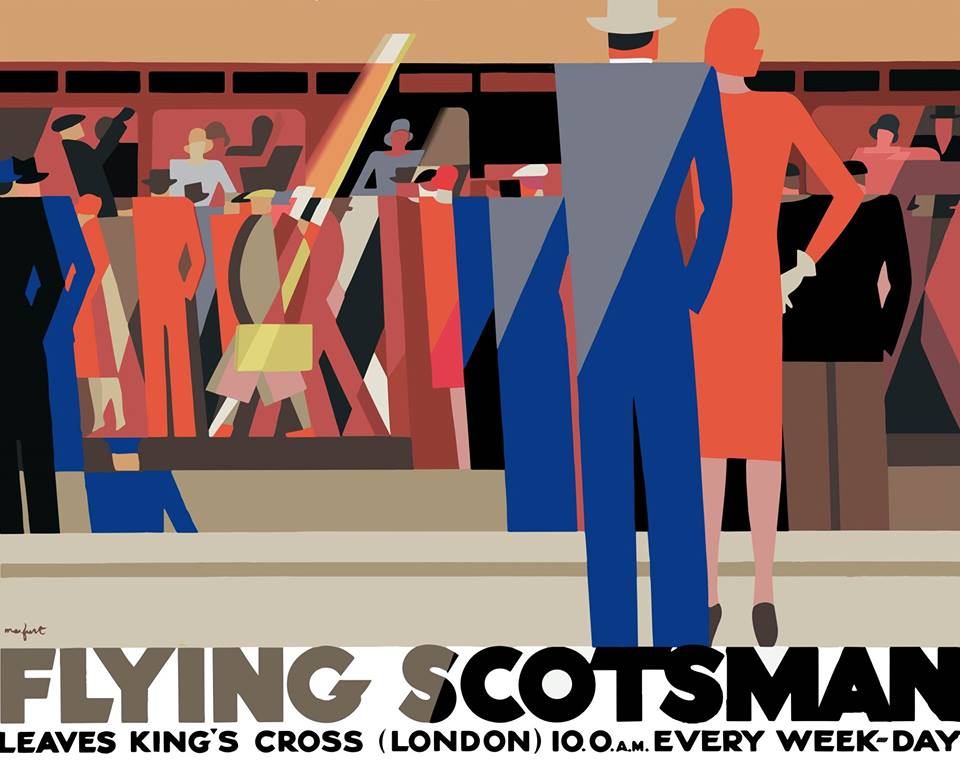
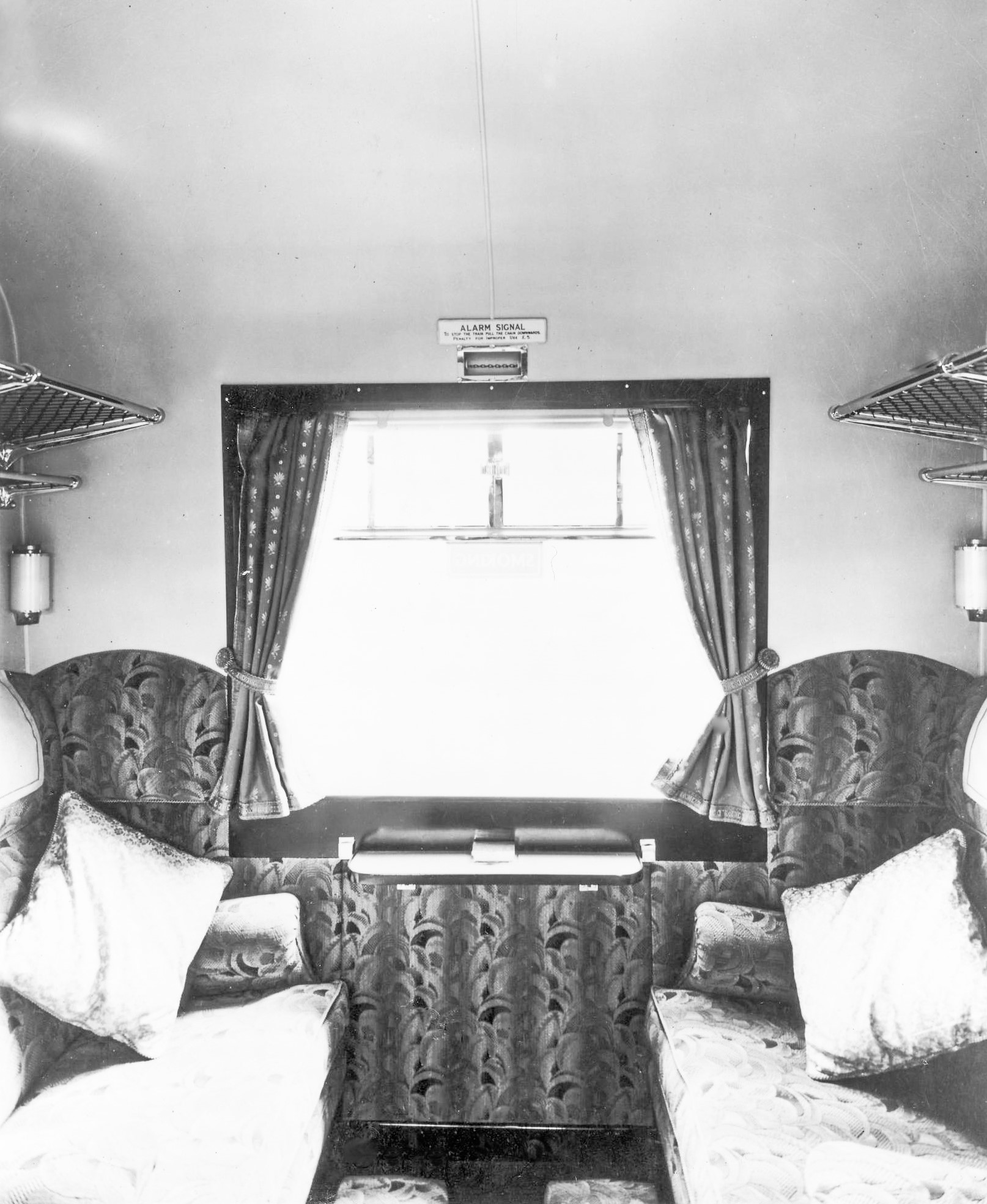
In 1938, ‘The Flying Scotsman’ service was provided with two new thirteen coach trains. 30 higher specification vehicles were included in the 1939 Carriage Building Programme. The carriages were standard outline teak bodied, end door carriages. They were equipped with Stone’s pressure ventilation and heating and had double glazed windows. The triple restaurant car sets’ kitchens had all-electric equipment.
Acton Surgey as commissioned to produce a special interior scheme for the restaurant cars and the result was to divide the saloon by aluminium framed partitions fitted with clear acrylic panels, in order to provide some privacy for passengers whilst at the same time allowing stewards to have a clear view down the car. A blue and silver décor scheme was chosen.

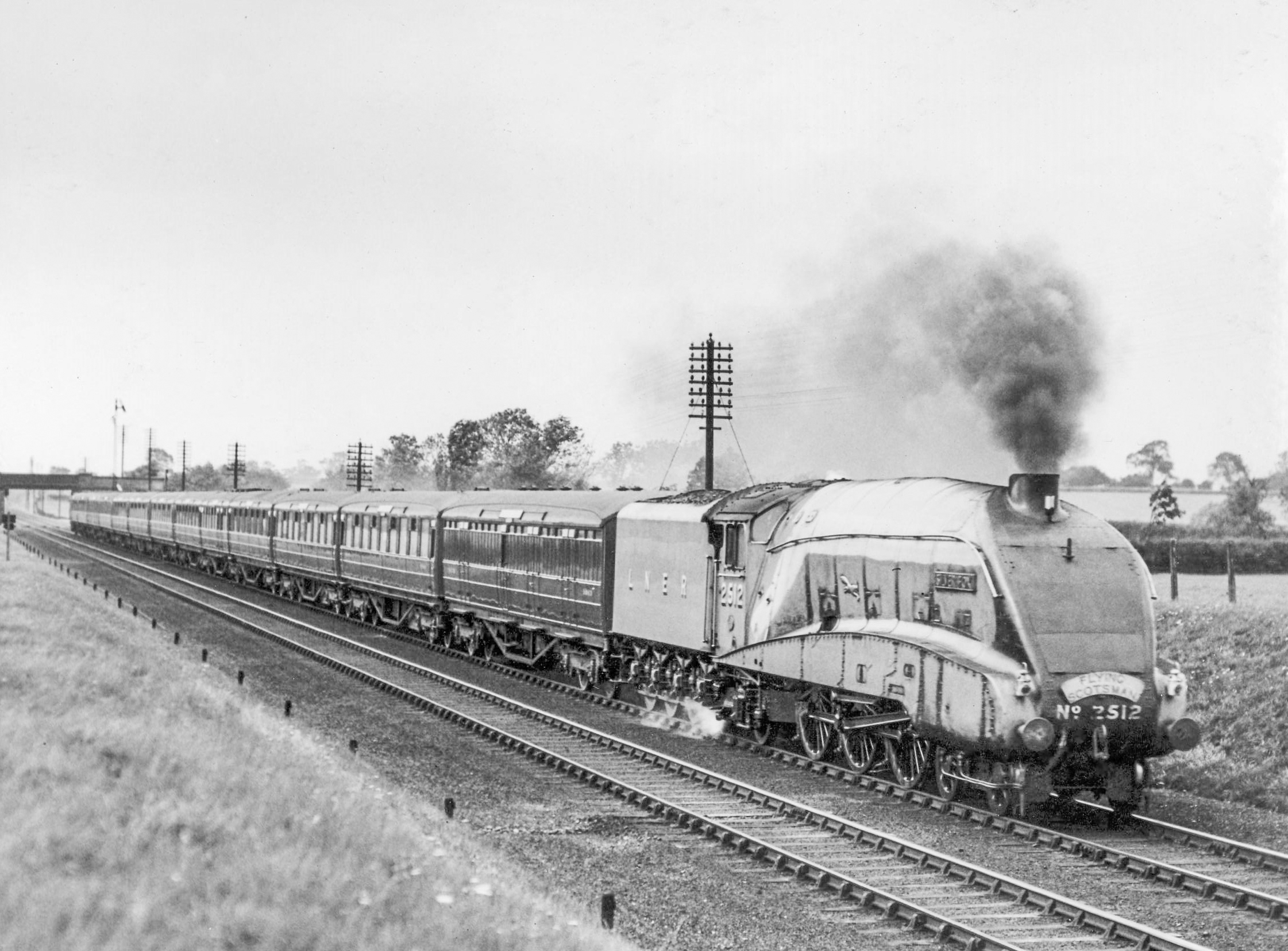
The booked formation for the winter train was:
BTK (Dia 261) + CK (Dia 259) for Glasgow
Locker CK (Dia 251) for Perth
Two TKs (Dia 256) for Edinburgh
Buffet Lounge Car (Dia 258) for Edinburgh
Triplet RC (Dia 255) for Edinburgh
FK (Dia 257) for Edinburgh
Locker CK (Dia 251) for Aberdeen
TK (Dia 256) for Aberdeen
BG for Aberdeen
Each trainset was equipped with a 66ft 6in Buffet Lounge Car. The saloon, seating twenty, was partitioned off by a glass panelled screen to provide a corridor for passing passengers. At one end was a pantry equipped with a range of modern appliances, including a coffee machine, grill, toaster and ice cream cabinet. At the other end was a ladies’ retiring room. Interior finishes in the new cars were green and silver for one and rose pink in the other.


The new stock for ‘The Flying Scotsman’ was demonstrated to the press in a way that typified the best of the LNER’s public relations. On 30th June 1938, guests and the press party boarded a set of Howlden six-wheeled coaches at King’s Cross, hauled by Stirling 4-2-2 No. 1, which took them to Stevenage. There was waiting Gresley class A4 No. 4498 Sir Nigel Gresley at the head of one of the new sets for a trip to Grantham and back.
These sets were the final flowering of the Gresley teak bodied stock, which had no more than two brief summers before the outbreak of war. Some attempt was then made to avoid dispersal of the stock and in early 1940 the eight thirds were designated as first-class. Two of the 30 vehicles were lost as a result of enemy action and others were fitted with steam heating from 1941.

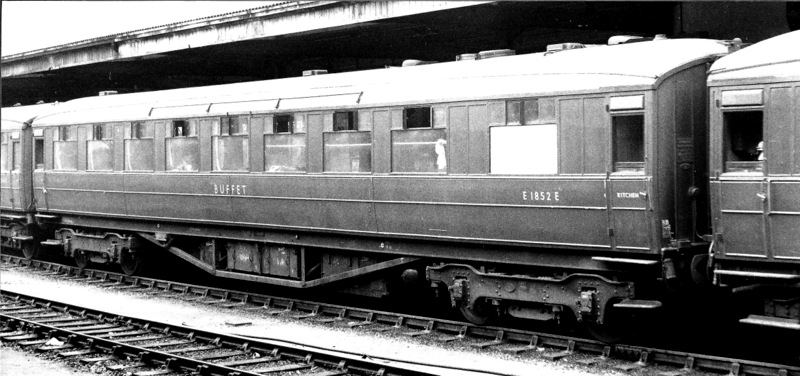
In postwar days ‘The Flying Scotsman’ stock from 1938 continued to receive some preferential treatment but from the late 1950s was dispersed to secondary duties until withdrawn in the 1962/63 period. In 1959 the two Buffet Lounge Cars were rebuilt by British Railways with propane gas cooking equipment. They were also ‘modernised’ internally with garish combinations of plastic panelling and then used in relief and excursion workings.
On its withdrawal in 1965, No.1852 was purchased by the then nascent Gresley Society for preservation and restoration to original condition. After a number of years stored in the open on the Great Central Railway, No.1852 was moved to covered accommodation at Kirkby Stephen East in February 2003, where it joined other LNER vehicles at various stages of restoration.


In April 2023 No. 1852 was moved to covered accommodation on the farm of the Society’s President John Cameron at Balbuthie in Fife, Scotland. It is now awaiting restoration, which is subject to a Heritage Fund application.
